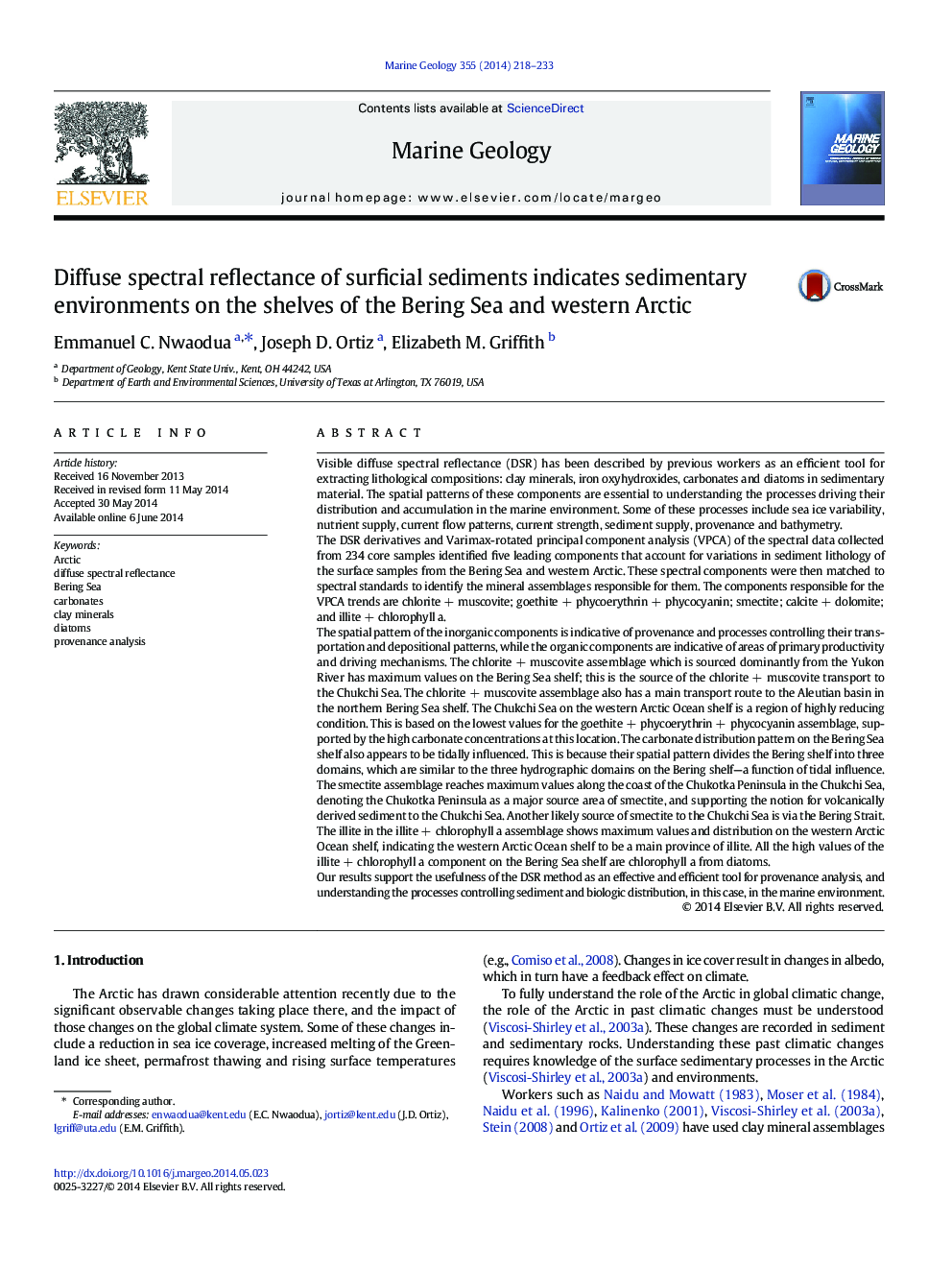| کد مقاله | کد نشریه | سال انتشار | مقاله انگلیسی | نسخه تمام متن |
|---|---|---|---|---|
| 4718274 | 1639097 | 2014 | 16 صفحه PDF | دانلود رایگان |
• We examine the application of diffuse spectral reflectance to provenance analysis.
• We denote the routes of the Yukon River sediment supply.
• Tides control carbonate patterns on the Bering Sea shelf.
• The Chukchi Sea is a zone of the highest reducing condition.
• Dominant iron oxyhydroxides on the Bering Sea inner shelf
Visible diffuse spectral reflectance (DSR) has been described by previous workers as an efficient tool for extracting lithological compositions: clay minerals, iron oxyhydroxides, carbonates and diatoms in sedimentary material. The spatial patterns of these components are essential to understanding the processes driving their distribution and accumulation in the marine environment. Some of these processes include sea ice variability, nutrient supply, current flow patterns, current strength, sediment supply, provenance and bathymetry.The DSR derivatives and Varimax-rotated principal component analysis (VPCA) of the spectral data collected from 234 core samples identified five leading components that account for variations in sediment lithology of the surface samples from the Bering Sea and western Arctic. These spectral components were then matched to spectral standards to identify the mineral assemblages responsible for them. The components responsible for the VPCA trends are chlorite + muscovite; goethite + phycoerythrin + phycocyanin; smectite; calcite + dolomite; and illite + chlorophyll a.The spatial pattern of the inorganic components is indicative of provenance and processes controlling their transportation and depositional patterns, while the organic components are indicative of areas of primary productivity and driving mechanisms. The chlorite + muscovite assemblage which is sourced dominantly from the Yukon River has maximum values on the Bering Sea shelf; this is the source of the chlorite + muscovite transport to the Chukchi Sea. The chlorite + muscovite assemblage also has a main transport route to the Aleutian basin in the northern Bering Sea shelf. The Chukchi Sea on the western Arctic Ocean shelf is a region of highly reducing condition. This is based on the lowest values for the goethite + phycoerythrin + phycocyanin assemblage, supported by the high carbonate concentrations at this location. The carbonate distribution pattern on the Bering Sea shelf also appears to be tidally influenced. This is because their spatial pattern divides the Bering shelf into three domains, which are similar to the three hydrographic domains on the Bering shelf—a function of tidal influence. The smectite assemblage reaches maximum values along the coast of the Chukotka Peninsula in the Chukchi Sea, denoting the Chukotka Peninsula as a major source area of smectite, and supporting the notion for volcanically derived sediment to the Chukchi Sea. Another likely source of smectite to the Chukchi Sea is via the Bering Strait. The illite in the illite + chlorophyll a assemblage shows maximum values and distribution on the western Arctic Ocean shelf, indicating the western Arctic Ocean shelf to be a main province of illite. All the high values of the illite + chlorophyll a component on the Bering Sea shelf are chlorophyll a from diatoms.Our results support the usefulness of the DSR method as an effective and efficient tool for provenance analysis, and understanding the processes controlling sediment and biologic distribution, in this case, in the marine environment.
Journal: Marine Geology - Volume 355, 1 September 2014, Pages 218–233
